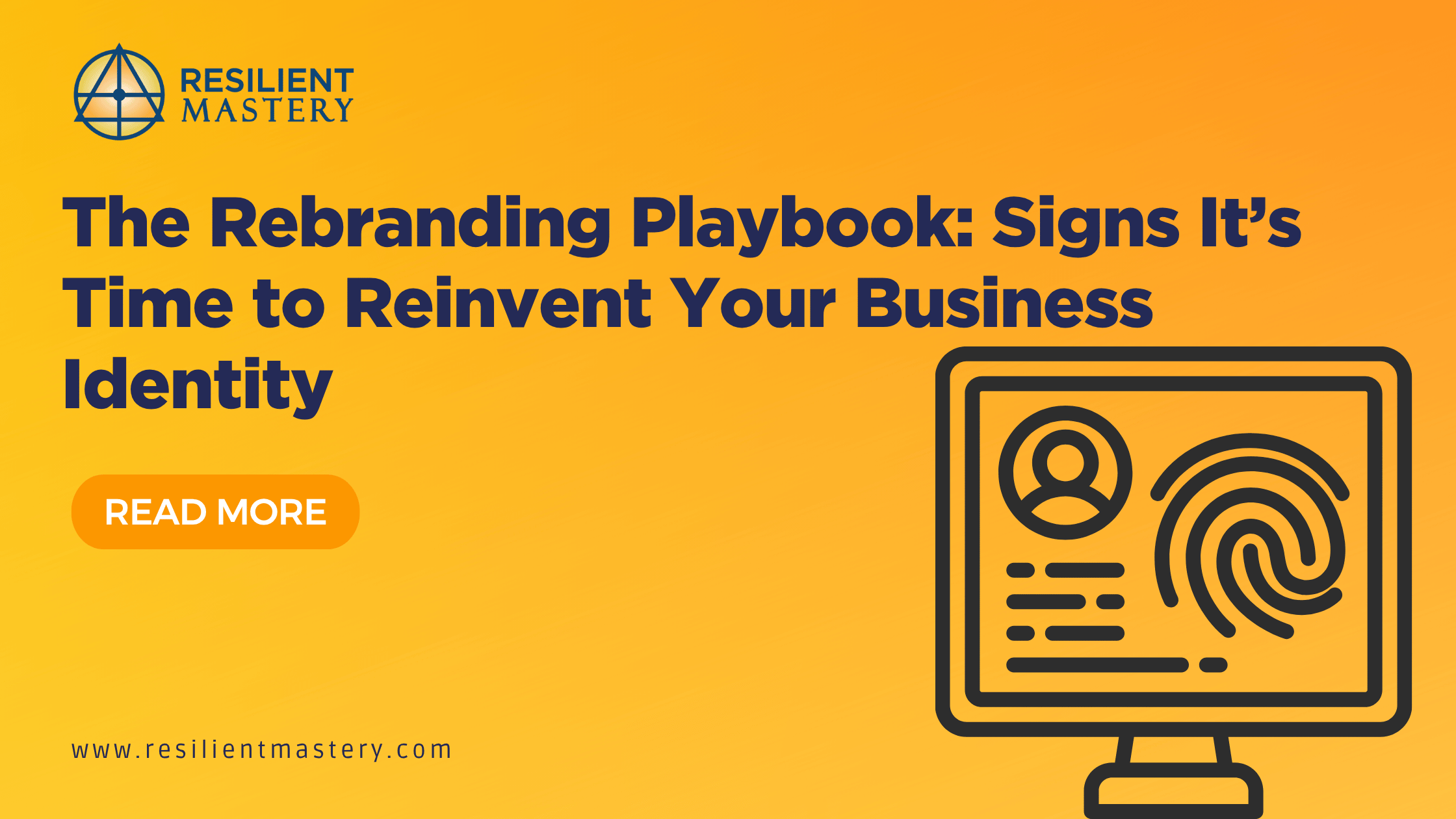Introduction: Why Rebranding Is a Growth Strategy
Rebranding is often misunderstood as a cosmetic facelift. In reality, it’s a strategic move that can redefine market position, attract new audiences, and reinvigorate growth.
In 2025’s fast-changing digital landscape, businesses that cling to outdated identities risk irrelevance. Markets evolve, technologies shift, and customer expectations rise. A well-timed rebrand can mean the difference between stagnation and renewed success.
This article provides a playbook for rebranding — starting with the signs it’s time, through the strategies that ensure success.
The 7 Signs It’s Time to Rebrand
1. Your Brand No Longer Reflects Your Vision
Companies evolve — and sometimes the brand doesn’t keep up.
- Have your services expanded beyond the original focus?
- Does your identity reflect outdated priorities?
- Do customers misunderstand what you actually do?
📊 Example: A local marketing agency added AI integrations but still branded itself around “traditional advertising.” Prospects assumed they were behind the times.
2. Market Shifts Have Left You Behind
Industries change quickly. If your identity feels out of sync with the market, it’s time to pivot.
- Competitors rebranded and positioned themselves as modern.
- Customer expectations shifted (e.g., sustainability, personalization).
- New entrants disrupted the space with fresh messaging.
📊 Stat: 64% of consumers choose brands that adapt messaging to current social and cultural shifts.
3. You’re Targeting a New Audience
When businesses expand into new demographics, rebranding ensures relevance.
- A B2B company moving into consumer markets.
- A local shop expanding into e-commerce.
- A startup moving upmarket to enterprise clients.
4. You’ve Outgrown Your Look and Feel
Logos, colors, and visuals age — sometimes faster than you think.
- Does your design look dated compared to competitors?
- Do you lack a cohesive brand system across platforms?
- Is your identity holding you back from premium positioning?
5. You’ve Experienced a Reputation Shift
Sometimes rebranding is about resetting perception.
- Past negative associations you want to move beyond.
- Mergers, acquisitions, or leadership changes.
- Desire to project trust, credibility, or innovation.
6. Your Digital Ecosystem Is Fragmented
If your brand feels inconsistent across web, social, and print, it weakens trust.
- Different logos/colors across channels.
- Inconsistent voice between platforms.
- Lack of unified narrative across digital touchpoints.
🔗 The Complete Guide to Building a Digital Ecosystem: Brand, Marketing, and AI in Harmony
7. Growth Has Plateaued
If leads, engagement, and conversions stall, your brand story might need a refresh.
Rebranding can inject new energy, spark press coverage, and open fresh markets.
The Rebrand Framework: How to Do It Right
Step 1: Audit Your Current Identity
Evaluate where your brand stands.
- Visual audit (logos, colors, consistency).
- Perception audit (customer surveys, reviews).
- Competitor audit (positioning analysis).
Step 2: Define the New Vision
Clarify what the rebrand should accomplish.
- Who is your target audience?
- What values should the brand communicate?
- What’s the positioning relative to competitors?
Step 3: Redesign Visual Identity
Work with creative professionals to refresh:
- Logos, fonts, and color palettes.
- Website and digital assets.
- Print, packaging, and merchandise.
📊 Stat: Consistent visual branding across platforms can increase revenue by 23%.
Step 4: Refine Voice and Messaging
Update your brand voice to reflect your new identity.
- Tone (professional, inspirational, casual).
- Messaging pillars (what you stand for).
- Taglines and headlines.
Step 5: Roll Out Across Ecosystem
Launch rebrand consistently across:
- Website, social, email, ads.
- Google Business Profile and directories.
- Physical assets (signage, packaging).
Step 6: Communicate the Why
Rebranding without explanation confuses customers. Use storytelling to:
- Share why you rebranded.
- Highlight customer benefits.
- Reassure continuity of quality and service.
Step 7: Measure and Optimize
Track how the rebrand impacts:
- Brand awareness and recall.
- Customer sentiment.
- Lead generation and sales.
Case Studies: Rebrands That Worked
Dunkin’ (Dropping “Donuts”)
Shifted from being donut-focused to coffee + lifestyle. Modernized identity to compete with Starbucks.
Old Spice
Rebranded from “grandpa’s cologne” to bold, humorous masculinity. Result: sales doubled within 12 months.
Small Business Example
A local wellness studio rebranded to emphasize holistic health instead of just yoga classes. Website traffic doubled, and membership increased 40% in 6 months.
Pitfalls to Avoid in Rebranding
- Rebranding Too Often: Creates confusion and distrust.
- Copying Competitors: Dilutes uniqueness.
- Neglecting Internal Buy-In: Employees must embody the new brand.
- Partial Rollouts: Inconsistent execution damages credibility.
Conclusion: Rebrand as Renewal
Rebranding isn’t about changing who you are — it’s about realigning your identity with your vision, audience, and the future.
Done right, a rebrand becomes a renewal: energizing employees, inspiring customers, and positioning your business for sustainable growth.
Ready for a rebrand that drives influence, trust, and conversions? Resilient Mastery combines creative design, marketing strategy, and AI integration to reinvent brands for 2025 and beyond.





